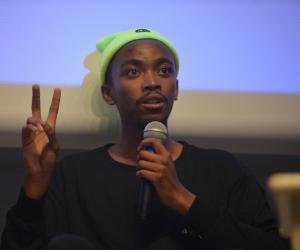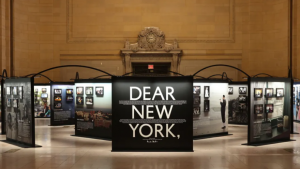One of the 89plus panelists at the Design Indaba Conference 2014, Bogosi Sekhukhuni is among a new generation of exciting artists inspired by and using the medium of the Internet in their work. He grapples with finding a sense of self in a post-apartheid society whose popular culture icons are still largely white.
“All the male protagonists in my life, in movies and entertainment are these white American males – this has an impact on your psychological make-up growing up,” he says.
He uses his art to introduce new ways of looking at himself. “Initially, I was interested in the representation of black people in the media and in visual culture,” Sekhukhuni says. “It isn’t a culture that represents a positive picture of Africans’ humanity.”
He garnered significant attention for his performance wherein he recreated the famous “sushi” incident involving Kenny Kunene, a well-to-do South African businessman who served sushi on near-naked women at his lavish 40th birthday party.
His focus has recently shifted to exploring the tole tech can have the pan-african agenda relationship between technology – specifically, the Internet – and people. “The Internet is something that has always been understood as a virtual environment,” he says, but he became increasingly interested in understanding or creating an analogy between the Internet and the human body.
His Dream Diaries series is a collection of videos investigating the relationship between his thoughts and dreams and his Internet experiences. The videos also explore national consciousness and the idea that presidencies can be linked to the national consciousness and cultural expressions of community, such as the “demented euphoria” surrounding Nelson Mandela’s election as South Africa’s first democratic leader.
One of his projects involves printing our his DNA as an alternative self-portrait and “a personal effort to reimagine an African identity outside of Afrofuturist wishy-washiness.”
Right now, I am interested in creating journeys, mental journeys, for myself and then having art objects that come to reflect those conversations, says Sekhukhuni.
His participation in the 89plus segment of Design Indaba served as both a sign of recognition and an inspiration that he believes will “spur on new and better progressions of the discourse.”








